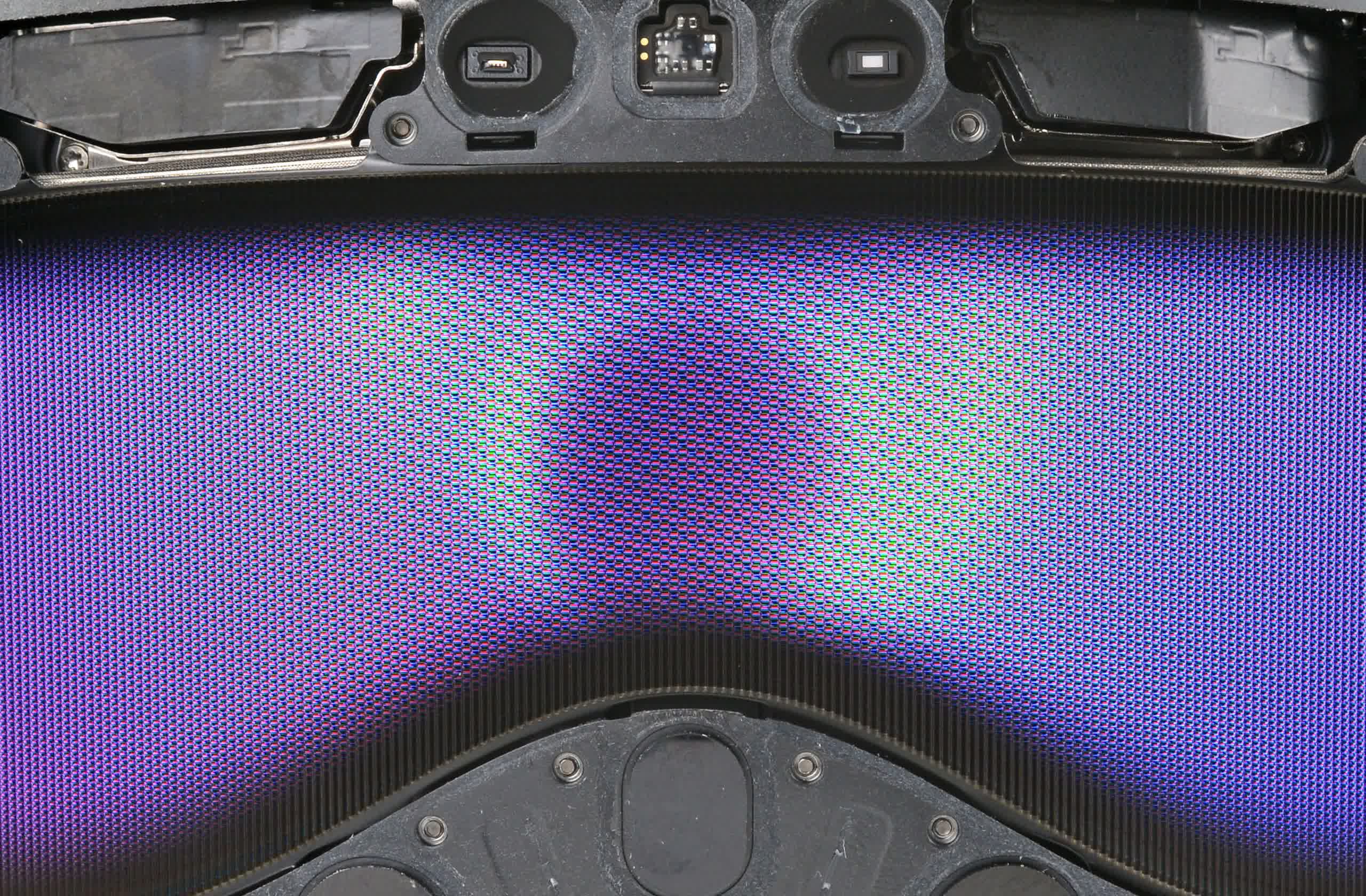In a nutshell: The complexity of Apple's recently released Vision Pro AR headset required iFixit to split its analysis into two parts, with the second installment soon to reveal the overall repairability score. However, this initial examination uncovers some strengths and weaknesses, including the trade-offs involved in Apple's unique EyeSight Display.
The first comprehensive teardown of the Apple Vision Pro reveals that, while some of its components might be easily repairable or replaceable, the intricate device is a mixed bag overall. iFixit's initial impressions are most favorable regarding the external components.
Unsurprisingly, the most easily replaceable element is one that earned Apple some ridicule – the external battery. Despite using a proprietary fat lightning cable, which could restrict compatibility with third-party batteries, swapping out the battery will be much easier than replacing batteries for other headsets or Apple products as they degrade over the next few years.
The teardown reveals that the Vision Pro battery comprises three iPhone batteries, weighing a total of 353 grams. Integrating it into the main unit would have made the headset significantly heavier than the Quest Pro.
Additionally, the head strap and speakers are readily detachable using standard tools. This is fortunate because prior third-party durability tests reveal that the speakers are one of the Vision Pro's most fragile parts. Making the light seals removable and washable was another wise decision, as makeup tends to smear on them. Safely removing the glass cover, another relatively fragile part, is somewhat challenging but feasible.
Digging deeper, the prescription insert lenses pose a potential issue, as each set is uniquely paired with a specific headset. This software lock likely prevents third-party replacements and could negatively affect eye-tracking responsiveness if not correctly calibrated to the user's eyes.

Like other reviewers, iFixit also found the Vision Pro's distinctive EyeSight display baffling. Apple implemented the feature – which renders a 3D feed of the user's eyes onto the front of the headset – to show when users are engaged with their external environment. However, critics say the projection is often difficult to see, and iFixit notes that it adds unnecessary complexity to the device.
The teardown reveals that the front display comprises three layers, including a lenticular lens that produces the 3D effect. Rendering three-dimensional depth is necessary to avoid the uncanny valley effect, but the lenticular lens severely limits the EyeSight display's maximum resolution, diminishing visibility for outside observers and making eye contact challenging.
iFixit is expected to soon provide a follow-up analysis of the Vision Pro's internal chips, offering further insights into the device's intricacies.
